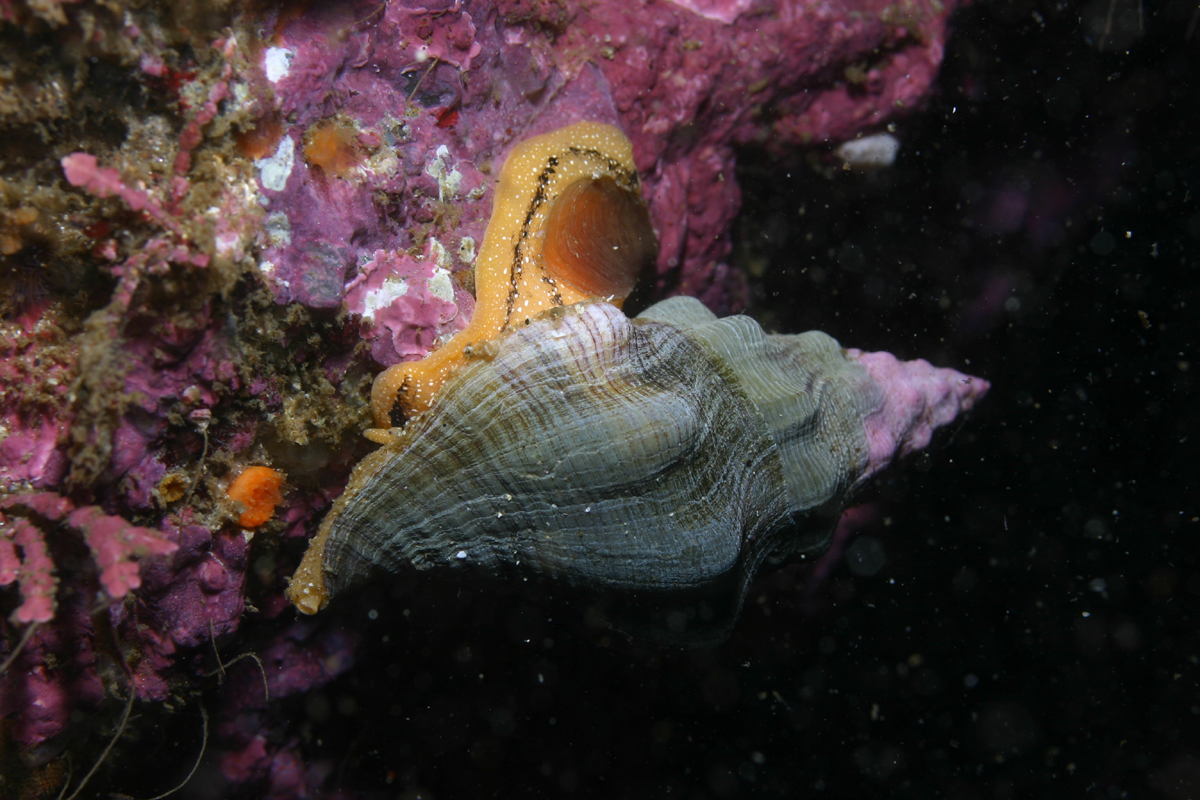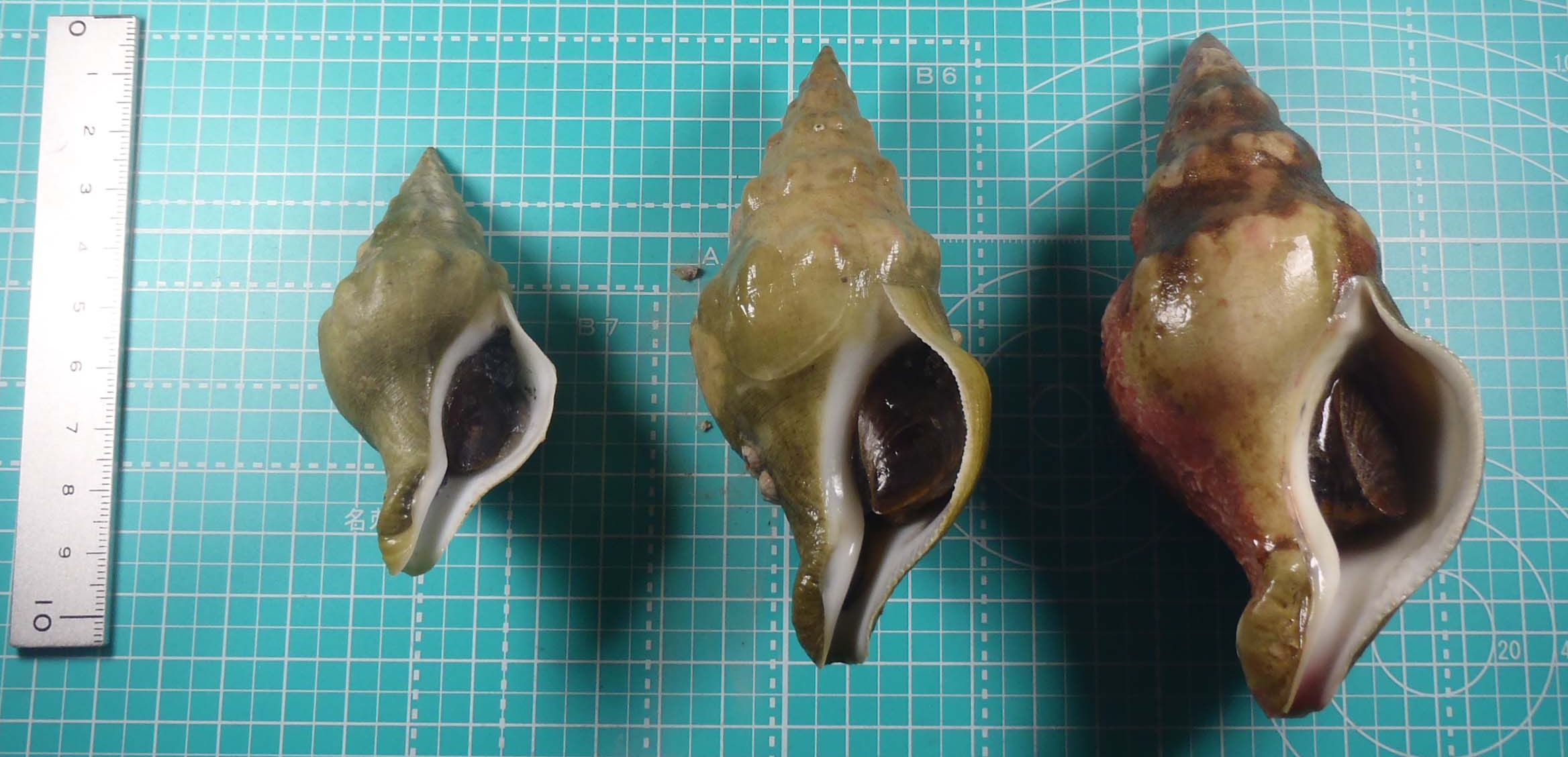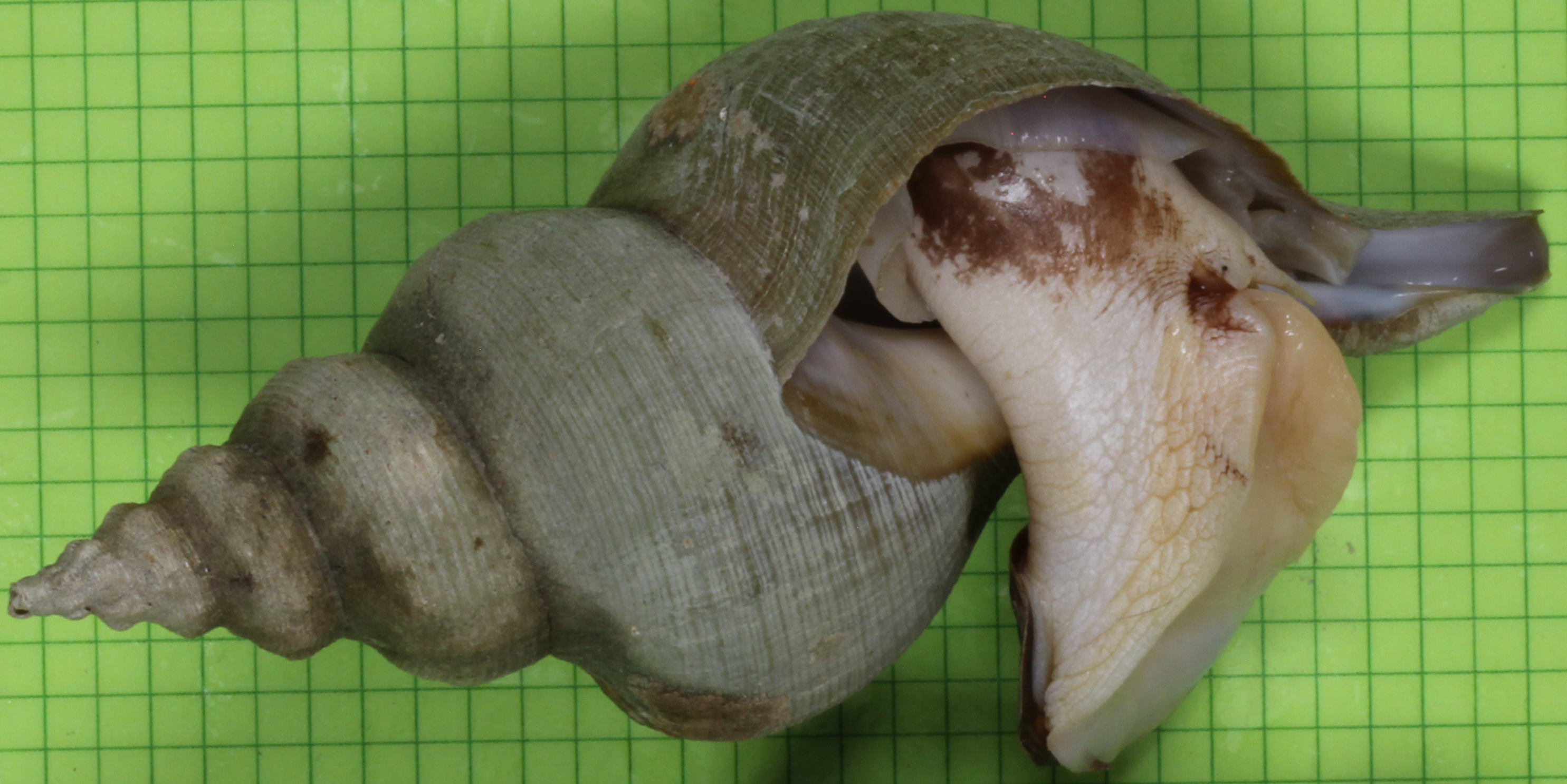|
Kelletia Vladimiri
''Kelletia'' is a genus of large sea snails, whelks, a marine gastropod molluscs in the family Austrosiphonidae, the true whelks.Bouchet, P.; Fraussen, K. (2015). Kelletia Bayle in P. Fischer, 1884. In: MolluscaBase (2015). Accessed through: World Register of Marine Species at http://www.marinespecies.org/aphia.php?p=taxdetails&id=490535 on 2016-07-07 Distribution One extant species ''Kelletia lischkei'' occurs in the Sea of Japan off the coasts of Japan and South Korea, and another '' K. kelletii'' is found of along the coasts of California, United States and in the Baja California, Mexico. Fossil species are documented in Japan,Ogasawara, K. 2002. Cenozoic Gastropoda. In: Ikeya, N., Hirano, H., Ogasawara, K. eds. The database of Japanese fossil type specimens described during the 20th Century (Part 2). Palaeontological Society of Japan, Special Paper 40. University of Tokyo, Tokyo. California,Hertlein, L.G. 1970. A new species of fossil ''Kelletia'' (Mollusca: Gastropoda) from ... [...More Info...] [...Related Items...] OR: [Wikipedia] [Google] [Baidu] |
Oligocene
The Oligocene ( ) is a geologic epoch of the Paleogene Period and extends from about 33.9 million to 23 million years before the present ( to ). As with other older geologic periods, the rock beds that define the epoch are well identified but the exact dates of the start and end of the epoch are slightly uncertain. The name Oligocene was coined in 1854 by the German paleontologist Heinrich Ernst Beyrich from his studies of marine beds in Belgium and Germany. The name comes from the Ancient Greek (''olígos'', "few") and (''kainós'', "new"), and refers to the sparsity of extant forms of molluscs. The Oligocene is preceded by the Eocene Epoch and is followed by the Miocene The Miocene ( ) is the first geological epoch of the Neogene Period and extends from about (Ma). The Miocene was named by Scottish geologist Charles Lyell; the name comes from the Greek words (', "less") and (', "new") and means "less recent" ... Epoch. The Oligocene is the third and final epoch of ... [...More Info...] [...Related Items...] OR: [Wikipedia] [Google] [Baidu] |
Kelletia Lischkei
''Kelletia lischkei'' is a species of large sea snail, or whelk, a marine gastropod mollusc in the family Buccinidae, the true whelks. Description ''Kelletia lischkei'' is a medium-to-large species of buccinid whelk. Distribution The species is endemic to the Sea of Japan, and is found in coastal waters off of South Korea and eastern Japan. Fossils of ''K. lischkei'' occur in the Middle Pleistocene fossil record of Japan,Ogasawara, K. 2002. Cenozoic Gastropoda. In: Ikeya, N., Hirano, H., Ogasawara, K. eds. The database of Japanese fossil type specimens described during the 20th Century (Part 2). Palaeontological Society of Japan, Special Paper 40. University of Tokyo, Tokyo. and the species bears a resemblance to the extinct fossil species ''Kelletia brevis ''Kelletia'' is a genus of large sea snails, whelks, a marine gastropod molluscs in the family Austrosiphonidae, the true whelks.Bouchet, P.; Fraussen, K. (2015). Kelletia Bayle in P. Fischer, 1884. In: MolluscaBas ... [...More Info...] [...Related Items...] OR: [Wikipedia] [Google] [Baidu] |
Sister Group
In phylogenetics, a sister group or sister taxon, also called an adelphotaxon, comprises the closest relative(s) of another given unit in an evolutionary tree. Definition The expression is most easily illustrated by a cladogram: Taxon A and taxon B are sister groups to each other. Taxa A and B, together with any other extant or extinct descendants of their most recent common ancestor (MRCA), form a monophyletic group, the clade AB. Clade AB and taxon C are also sister groups. Taxa A, B, and C, together with all other descendants of their MRCA form the clade ABC. The whole clade ABC is itself a subtree of a larger tree which offers yet more sister group relationships, both among the leaves and among larger, more deeply rooted clades. The tree structure shown connects through its root to the rest of the universal tree of life. In cladistic standards, taxa A, B, and C may represent specimens, species, genera, or any other taxonomic units. If A and B are at the same ta ... [...More Info...] [...Related Items...] OR: [Wikipedia] [Google] [Baidu] |
Antarctoneptunea
''Antarctoneptunea'' is a genus of sea snails, marine gastropod mollusks in the family Austrosiphonidae, the true whelks. Distribution ''Antarctoneptunea'' marine snails occur in deep water surrounding New Zealand and in Southern Ocean encircling Antarctica, particularly in the Ross Sea. Dell R.K., Antarctic Mollusca with special reference to the fauna of the Ross Sea, The Royal Society of New Zealand Bulletin 27. Evolution Molecular phylogenetic trees based on mitochondrial genomic and nuclear ribosomal DNA sequence data indicate that ''Antarctoneptunea'' is closely related to the Northern Hemisphere genus ''Kelletia'', and '' Penion'' siphon whelks found in waters surrounding New Zealand and Australia. It has been suggested that some Antarctic fossil species of ''Penion'' are misclassified ''Antarctoneptunea''. Species Species within the genus ''Antarctoneptunea'' include: * ''Antarctoneptunea aurora'' (Hedley, 1916) * ''Antarctoneptunea benthicola'' (Dell, 1956) ;S ... [...More Info...] [...Related Items...] OR: [Wikipedia] [Google] [Baidu] |
Ribosomal DNA
Ribosomal DNA (rDNA) is a DNA sequence that codes for ribosomal RNA. These sequences regulate transcription initiation and amplification, and contain both transcribed and non-transcribed spacer segments. In the human genome there are 5 chromosomes with nucleolus organizer regions: the acrocentric chromosomes 13 ( RNR1), 14 ( RNR2), 15 ( RNR3), 21 ( RNR4) and 22 ( RNR5). The genes that are responsible for encoding the various sub-units of rRNA are located across multiple chromosomes in humans. But the genes that encode for rRNA are highly conserved across the domains, with only the copy numbers involved for the genes having varying numbers per species. In Bacteria, Archaea, and chloroplasts the rRNA is composed of different (smaller) units, the large (23S) ribosomal RNA, 16S ribosomal RNA and 5S rRNA. The 16S rRNA is widely used for phylogenetic studies. Eukaryotes The rRNA transcribed from the approximately 600 r DNA repeats forms the most abundant section of RNA foun ... [...More Info...] [...Related Items...] OR: [Wikipedia] [Google] [Baidu] |
Mitochondrial DNA
Mitochondrial DNA (mtDNA or mDNA) is the DNA located in mitochondria, cellular organelles within eukaryotic cells that convert chemical energy from food into a form that cells can use, such as adenosine triphosphate (ATP). Mitochondrial DNA is only a small portion of the DNA in a eukaryotic cell; most of the DNA can be found in the cell nucleus and, in plants and algae, also in plastids such as chloroplasts. Human mitochondrial DNA was the first significant part of the human genome to be sequenced. This sequencing revealed that the human mtDNA includes 16,569 base pairs and encodes 13 proteins. Since animal mtDNA evolves faster than nuclear genetic markers, it represents a mainstay of phylogenetics and evolutionary biology. It also permits an examination of the relatedness of populations, and so has become important in anthropology and biogeography. Origin Nuclear and mitochondrial DNA are thought to be of separate evolutionary origin, with the mtDNA being deri ... [...More Info...] [...Related Items...] OR: [Wikipedia] [Google] [Baidu] |
Penion
''Penion'' is a genus of large marine snails, commonly known as siphon whelks, classified within the mollusc family Austrosiphonidae, the true whelks.MolluscaBase eds. (2021). MolluscaBase. Penion P. Fischer, 1884. Accessed through: World Register of Marine Species at: http://www.marinespecies.org/aphia.php?p=taxdetails&id=488452 on 2021-12-24 Description Siphon whelks are large, benthic marine snails, or whelks. Powell A. W. B., ''New Zealand Mollusca'', William Collins Publishers Ltd, Auckland, New Zealand 1979 Willan, R.C., de C. Cook, S., Spencer, H.G., Creese, R.G., O’Shea, S., Jackson, G.D. Phylum Mollusca. In: de C. Cook, S.C. (eds.), ''New Zealand Coastal Marine Invertebrates 1'', 406 – 407. Canterbury University Press, Christchurch, New Zealand ''Penion'' are commonly called siphon whelks because they have a very long siphon. Species typically have a large, pointed operculum. Ponder, W.F. 1973. A review of the Australian species of ''Penion'' Fischer (Neogastr ... [...More Info...] [...Related Items...] OR: [Wikipedia] [Google] [Baidu] |
MT-RNR2
Mitochondrially encoded 16S RNA (often abbreviated as ''16S'') is the mitochondrial large subunit ribosomal RNA that in humans is encoded by the MT-RNR2 gene In biology, the word gene (from , ; "... Wilhelm Johannsen coined the word gene to describe the Mendelian units of heredity..." meaning ''generation'' or ''birth'' or ''gender'') can have several different meanings. The Mendelian gene is a b .... The MT-RNR2 gene also encodes the Humanin polypeptide that has been the target of Alzheimer's disease research. The 16S rRNA is the mitochondrial homologue of the prokaryotic 23S and eukaryotic nuclear 28S ribosomal RNAs. See also * Mitochondrial DNA * Humanin References Ribosomal RNA Human mitochondrial genes {{genetics-stub ... [...More Info...] [...Related Items...] OR: [Wikipedia] [Google] [Baidu] |
Buccinidae
The Buccinidae are a very large and diverse taxonomic family of large sea snails, often known as whelks or true whelks.Bouchet, P.; Gofas, S. (2010). Buccinidae. In: Bouchet, P.; Gofas, S.; Rosenberg, G. (2010) World Marine Mollusca database. Accessed through: World Register of Marine Species at http://www.marinespecies.org/aphia.php?p=taxdetails&id=149 on 2010-12-30 The family includes more than 1500 species. Taxonomy The family Busyconidae was for a time treated as a subfamily of Buccinidae called Busyconinae. Genera ''Antillophos'', '' Engoniophos'', '' Phos'', ''Nassaria'', '' Tomlinia'', '' Anentome'' and '' ''Clea'''' were treated within family Buccinidae, but they were moved to Nassariidae in 2016. Habitat The true whelks occur worldwide in all seas from tropical oceans to the cold seas of the Arctic Ocean and the Southern Ocean. They are found from the intertidal to the bathypelagic zones. Most prefer a solid bottom, but some inhabit sandy substrates. Descri ... [...More Info...] [...Related Items...] OR: [Wikipedia] [Google] [Baidu] |
Phylogeny
A phylogenetic tree (also phylogeny or evolutionary tree Felsenstein J. (2004). ''Inferring Phylogenies'' Sinauer Associates: Sunderland, MA.) is a branching diagram or a tree showing the evolutionary relationships among various biological species or other entities based upon similarities and differences in their physical or genetic characteristics. All life on Earth is part of a single phylogenetic tree, indicating common ancestry. In a ''rooted'' phylogenetic tree, each node with descendants represents the inferred most recent common ancestor of those descendants, and the edge lengths in some trees may be interpreted as time estimates. Each node is called a taxonomic unit. Internal nodes are generally called hypothetical taxonomic units, as they cannot be directly observed. Trees are useful in fields of biology such as bioinformatics, systematics, and phylogenetics. ''Unrooted'' trees illustrate only the relatedness of the leaf nodes and do not require the ancestral root ... [...More Info...] [...Related Items...] OR: [Wikipedia] [Google] [Baidu] |
Ecuador
Ecuador ( ; ; Quechuan languages, Quechua: ''Ikwayur''; Shuar language, Shuar: ''Ecuador'' or ''Ekuatur''), officially the Republic of Ecuador ( es, República del Ecuador, which literally translates as "Republic of the Equator"; Quechuan languages, Quechua: ''Ikwadur Ripuwlika''; Shuar language, Shuar: ''Ekuatur Nunka''), is a country in northwestern South America, bordered by Colombia on the north, Peru on the east and south, and the Pacific Ocean on the west. Ecuador also includes the Galápagos Islands in the Pacific, about west of the mainland. The country's Capital city, capital and largest city is Quito. The territories of modern-day Ecuador were once home to a variety of Indigenous peoples in Ecuador, Indigenous groups that were gradually incorporated into the Inca Empire during the 15th century. The territory was Spanish colonization of the Americas, colonized by Spain during the 16th century, achieving independence in 1820 as part of Gran Colombia, from which it ... [...More Info...] [...Related Items...] OR: [Wikipedia] [Google] [Baidu] |
Baja California
Baja California (; 'Lower California'), officially the Free and Sovereign State of Baja California ( es, Estado Libre y Soberano de Baja California), is a state in Mexico. It is the northernmost and westernmost of the 32 federal entities of Mexico. Before becoming a state in 1952, the area was known as the North Territory of Baja California (). It has an area of (3.57% of the land mass of Mexico) and comprises the northern half of the Baja California Peninsula, north of the 28th parallel, plus oceanic Guadalupe Island. The mainland portion of the state is bordered on the west by the Pacific Ocean; on the east by Sonora, the U.S. state of Arizona, and the Gulf of California; on the north by the U.S. state of California; and on the south by Baja California Sur. The state has an estimated population of 3,769,020 as of 2020, significantly higher than the sparsely populated Baja California Sur to the south, and similar to San Diego County, California, to its north. Over 75% of t ... [...More Info...] [...Related Items...] OR: [Wikipedia] [Google] [Baidu] |



.png)
.png)

.jpg)

